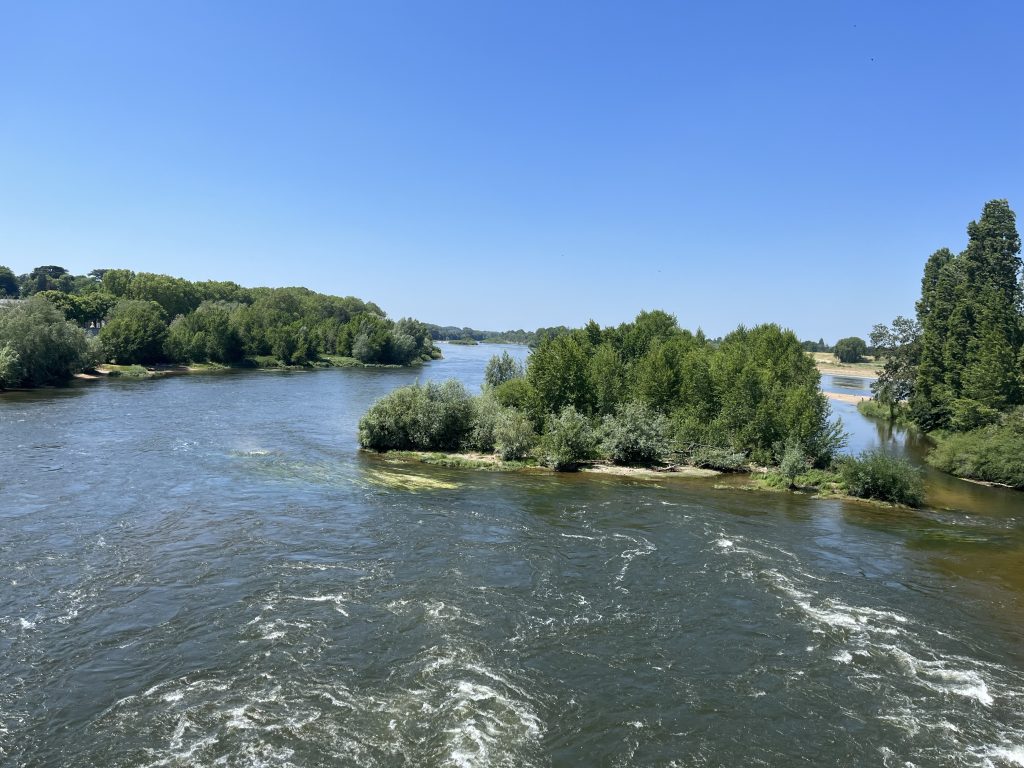
Amboise
I checked several websites before visiting the elegant town of Amboise last week, each one urging me to call by.
One, amboise-valdeloire, provides a list of the top ten things to do, number one being the enjoyment of a ‘yummy breakfast at the Bigot Bakery’.
Fourth position is awarded to the home in his last few years of renowned Italian polymath, Leonardo da Vinci. The sumptuous residence of French Kings, the Château d’Amboise, doesn’t even get a mention.
In its top ten introduction there is at least an acknowledgement of an ‘infinity of reasons’ to visit the town, defending its selection with a bizarre question to which it provides its own answer: “Do you think we are chauvinistic? Well, just a little!!!”, followed by a picture of a cake.
I may one day regret never having sampled the Bigot Bakery’s yummy breakfast, something I’ll just have to live with. I opted instead for a self-curated ‘must do’ list, imperfect though it may be, and because I was only there for one night, included only three.
The first is the wonderful view of the Loire, pictured above, as I walked across the Pont de l’Île d’Or.
A close second is the cake website’s fourth, the beautiful Château du Clos, where artist, inventor and scientist, the great Leonardo da Vinci, spent his last few years.
The view of the Château d’Amboise from the bridge is my third. It’s an imposing edifice, and certainly not its best profile, but it seems appropriate on approaching Amboise, given a significance that stretches far back and beyond the town in ways that a breakfast never could. I visited all three the next morning, but first had a wander around town.
Amboise is undoubtedly a beautiful place, but like so many of beauty everywhere, the very charms that draw people have tarnished the experience, simply because they, of which I’m one, arrive in such numbers.
In Amboise the Place Michel Debré is where many congregate to eat, a street I imagine once to have been a busy place of local trades, such as the Pâtisserie Chocolaterie Bigot, still there today, and presumably the butchers, bakers and candlestick makers, to quote from the 18th century English nursery rhyme, Rub-a-dub-dub.
Rub-a-dub-dub,
Three men in a tub,
And who do you think they be?
The butcher, the baker, the candlestick maker,
And all of them out to sea.
I had a coffee in a quieter side street, perhaps once as busy with local trades, but now cluttered with souvenir shops and even one where you can have a photograph taken of your iris, which is then made into a piece of art for only €49. Larger versions, of which there were sample pictures featuring someone’s planet-like iris on a wall above a sofa, are also available.
Earlier I’d seen a golden statue of an elderly man positioned on a bench on the Place Michel Debré. I’d assumed it to be a municipal offering, perhaps by a local artist. People sat themselves beside it for photographs to take home, their visit to Amboise immortalised forever in gold.
As I gazed at the iris shop, to my surprise, the statue walked past and, turning into a doorway, disappeared up a flight of stairs. It, or rather he, was evidently a man who earned his crust from being golden and still, making startled tourists gasp and giggle, take pictures and give money. It seemed an odd profession in this ancient town, a new and slightly seedy incarnation of the lavish entertainment that must once have taken place in the courts of French kings.
For a moment this beautiful town’s rich history seemed partially sidelined and outshone, as if some ghastly spell had been cast, turning the streets of the centre into a sickly Alice in Wonderland/Disney hybrid. This, of course, is an exaggeration and grossly unfair to its citizens, golden or grey, who live here and make a living, but I’d had enough and decided to retire to my hotel and visit my top three in the morning.
I had a fitful sleep during an unusually hot and sultry night, made worse by being in the first hotel I’ve ever stayed where eating and drinking in guests’ rooms is forbidden. A serious notice threatened a €150 fine for transgressors.
I’ve never removed a cork so stealthily. The drained bottle and cardboard and paper trappings from my meal were smuggled out the next morning on my way to the bridge, where I had an early morning stroll before walking on to the Château du Clos Lucé, where I’d rather have stayed.
Château du Clos Lucé
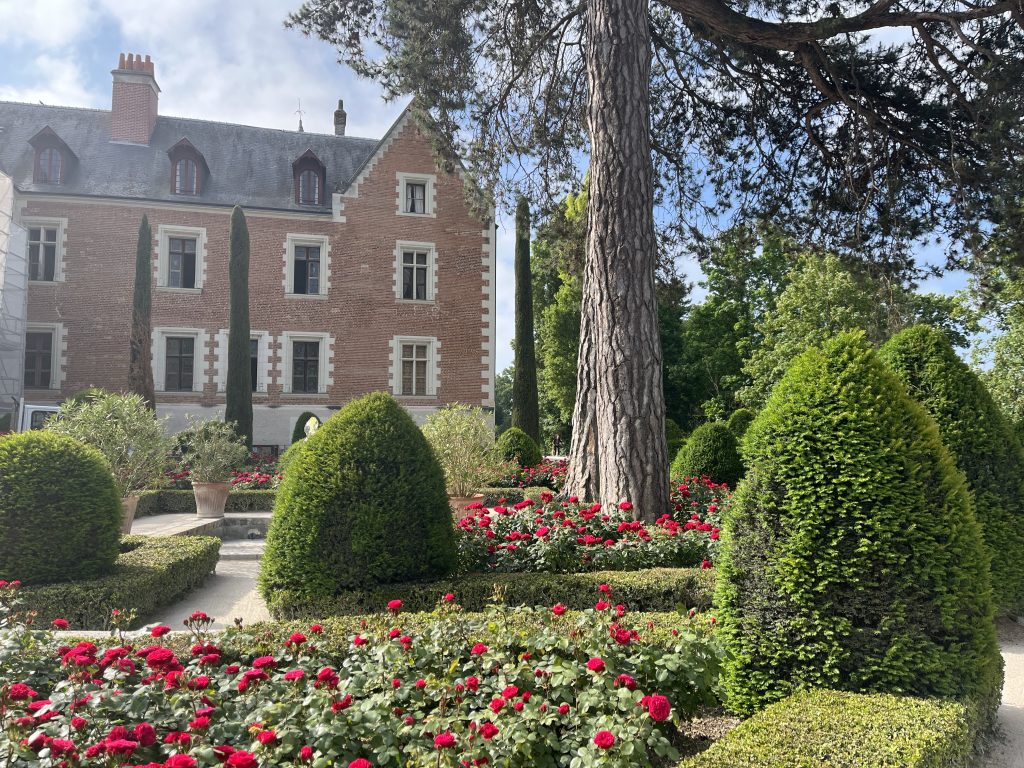
In 1516, invited by King Francis I, Leonardo da Vinci arrived at Clos Lucé having crossed the alps with his faithful disciple, Francesco Melzi, and his Milanese servant, Battista da Villanis. With them came the Mona Lisa, the Virgin and Child with Saint Anne, Saint John the Baptist and all his manuscripts, all now on display in the Louvre.
Francis, only appointed King the year before at the tender age of twenty, was a da Vinci fan. As well as a fine house, he gave him 1,000 gold crowns a year and a job title that must have been fun to pull out at dinner parties.
“So what do you do Mr da Vinci?”
“Oh, I’m First Painter, Architect and Engineer to the King. What about you?”
During da Vinci’s final three years he pursued his many interests, which included painting, urban planning, hydraulic works, botany, civil and military engineering, architecture and more. Examples of his work are on display at Clos Lucé, too many to mention here.
He passed away at the age of sixty-seven, King Francis at his side, his remains now resting in the Château d’Amboise’s chapel.
I took a few pictures.
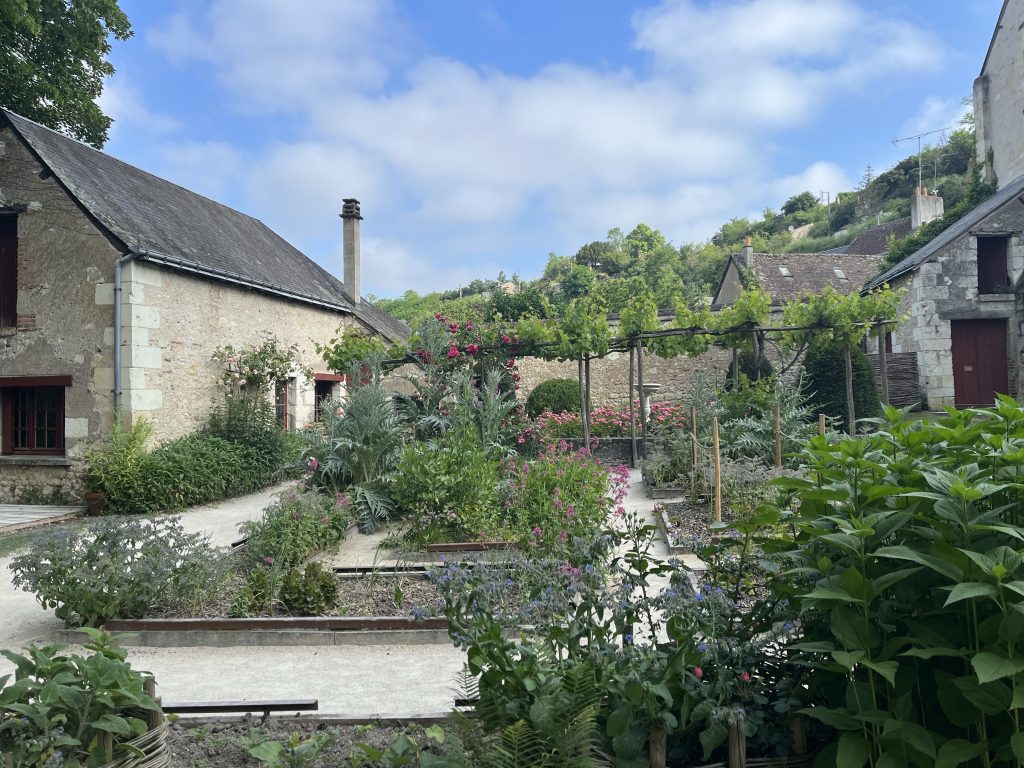
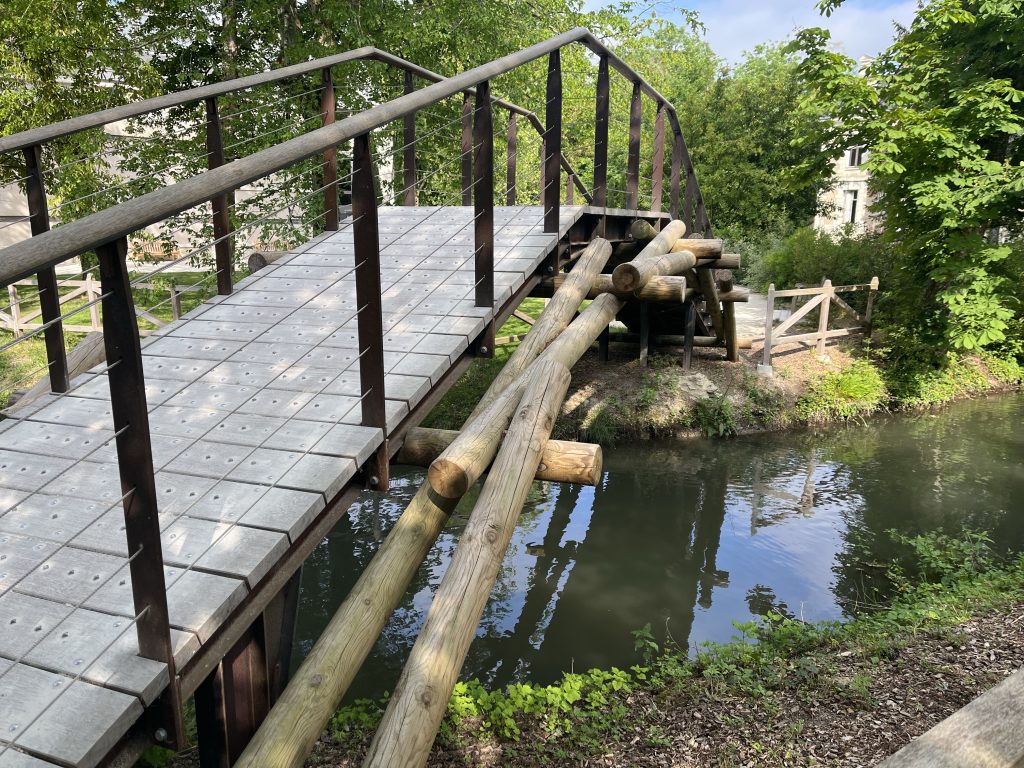
A self-supporting arch bridge, easy to put up and take down and made from easily-sourced materials. A clever interlocking assembly system enables the bridge to stay up without nails or screws.
Note for Jim & Brigitte
How about one of these 👆when yours finally gives up the ghost? I’ll help.
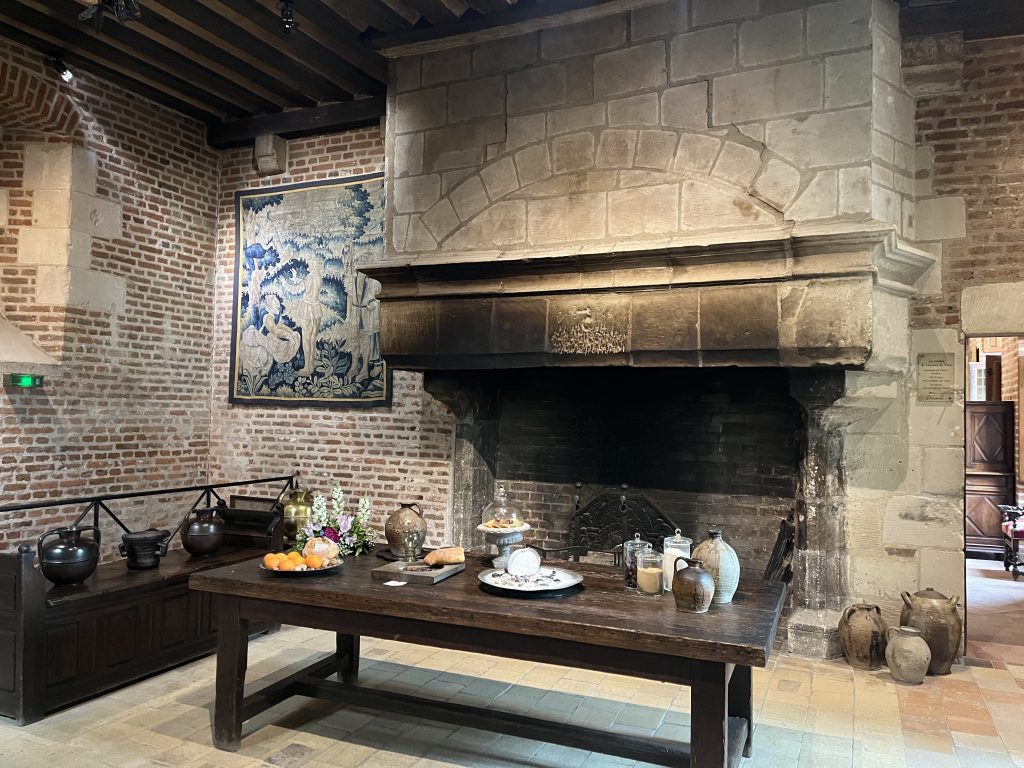
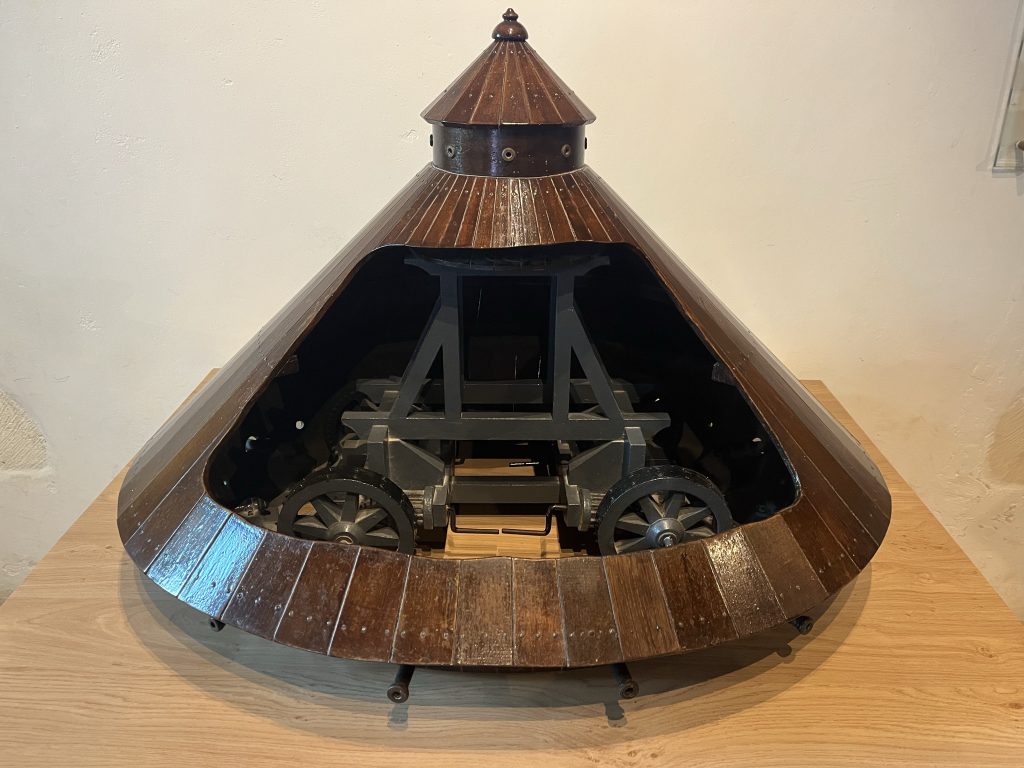
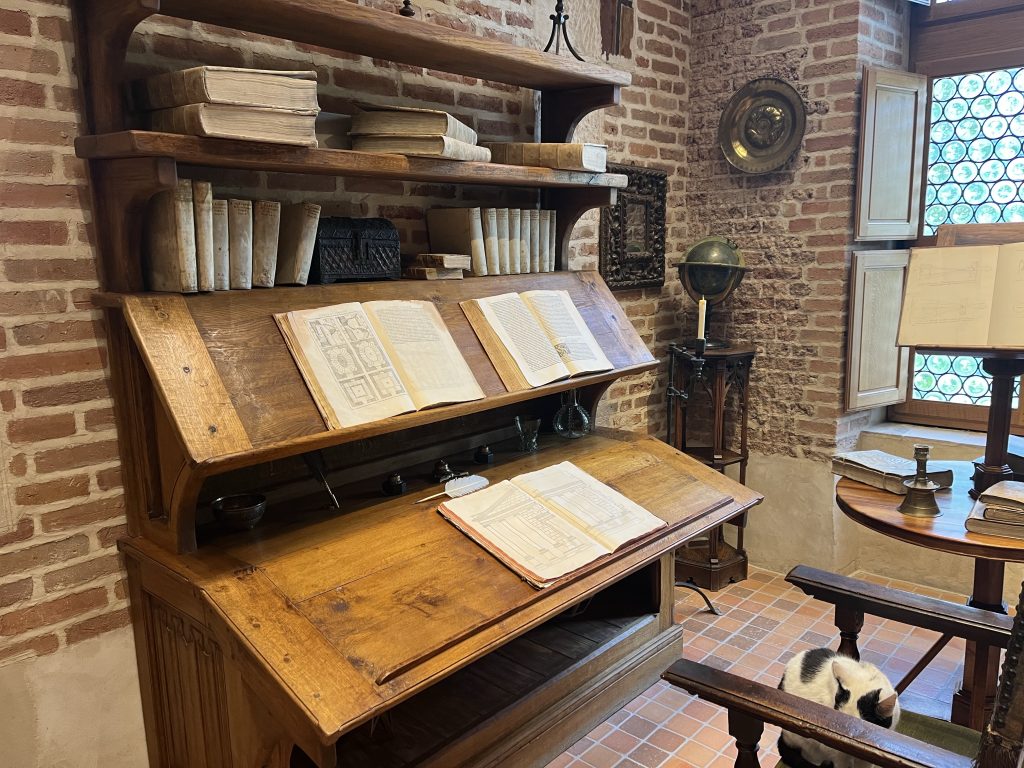
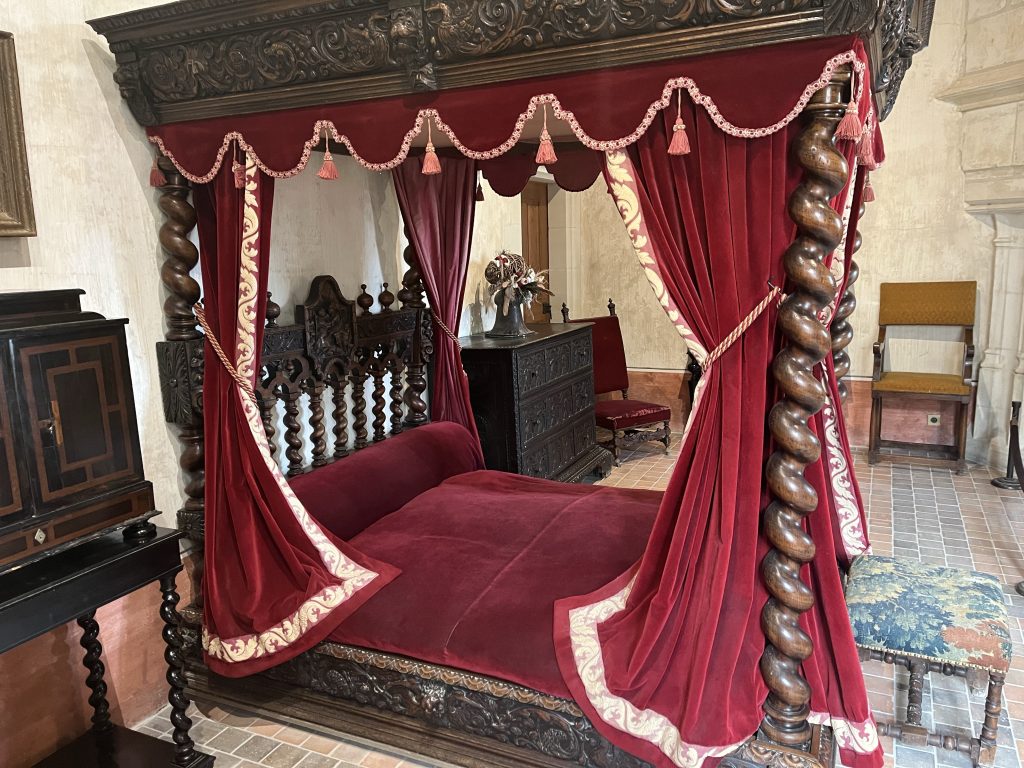
Château d’Amboise
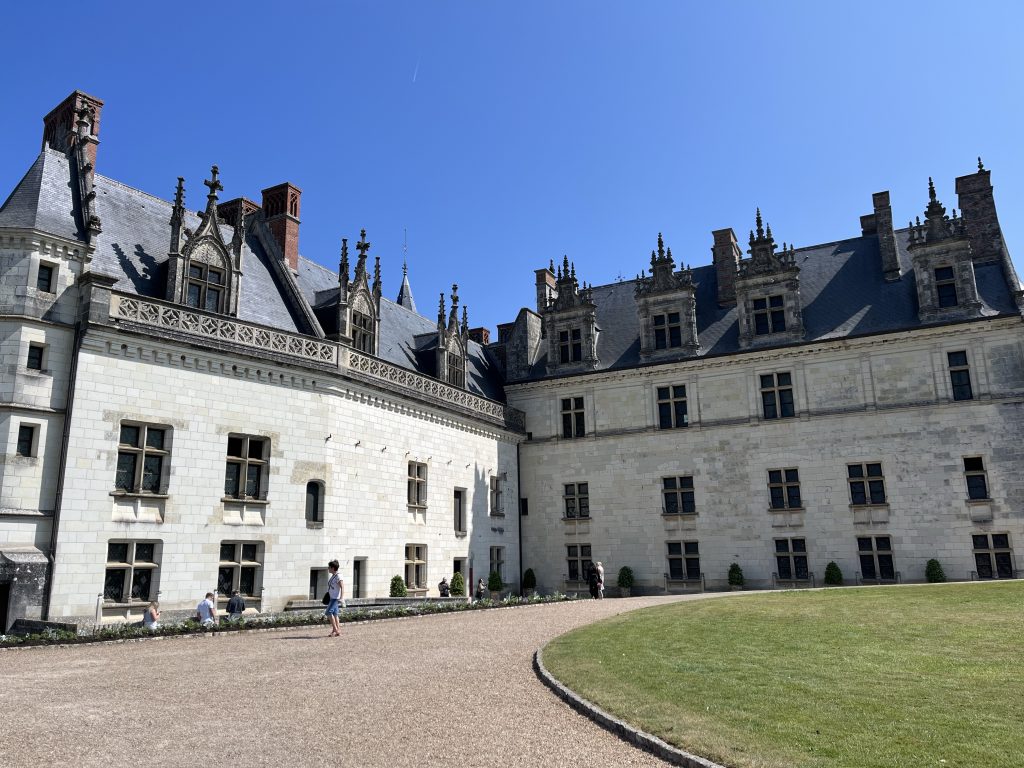
In the 14th & 15th centuries chivalric orders were a pretty big thing and played a significant role in European society. They were prestigious organisations, fortified by a potent mix of military, religious and social power. Renowned among them was the Order of the Garter in England, founded by King Edward III in the mid-14th century. Another, highly influential in Western Europe, was the Order of the Golden Fleece, founded by the Duke of Burgundy.
From what little I know of the time, Louis XI sought to consolidate his authority by establishing his own order, the Order of Saint Michael, with which he attempted to counterbalance the prestige and influence of the Order of the Golden Fleece. Apparently there was considerable rivalry between the two, driven by territorial disputes and political ambition.
There’s a lot to take in on a tour of the Château d’Amboise but from what I can gather from the ‘histopads’ handed out to visitors and an abundance of information displays, Louis XI won. The rivalry culminated in the Burgundian Wars, a series of conflicts that lasted from the late 1460s to the late 1470s, leading ultimately to the downfall of the Duchy of Burgundy as an independent political entity.
There’s no doubt more to it but a tour of the Château’s well worth a visit, if only to breathe in a sense of the times, and the ramparts offer superb views of the town and river.
I particularly enjoyed the sight of hundreds of house martins darting in and out of the many ornate crevices built into the eaves of the Château. They’ve done the same for centuries in between sojourns in Africa while we, such as in Nantes, France’s principal slave-trading port and where I’m bound soon, have had a relationship with the continent that has been so shamefully different.
I took a few pictures.
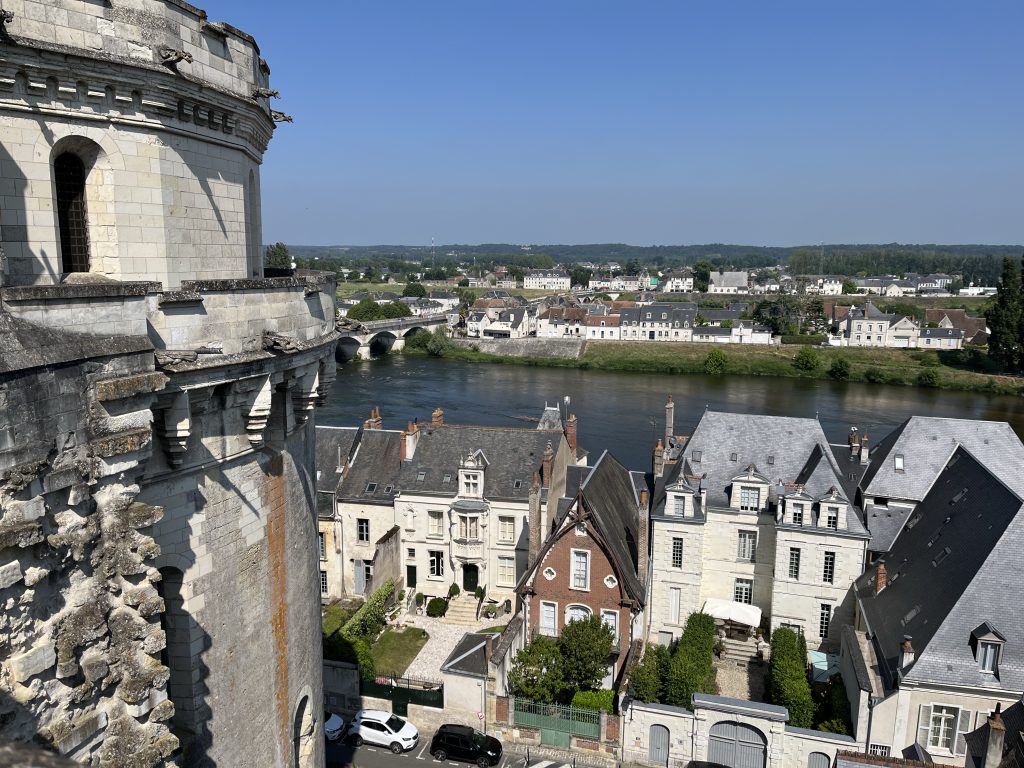
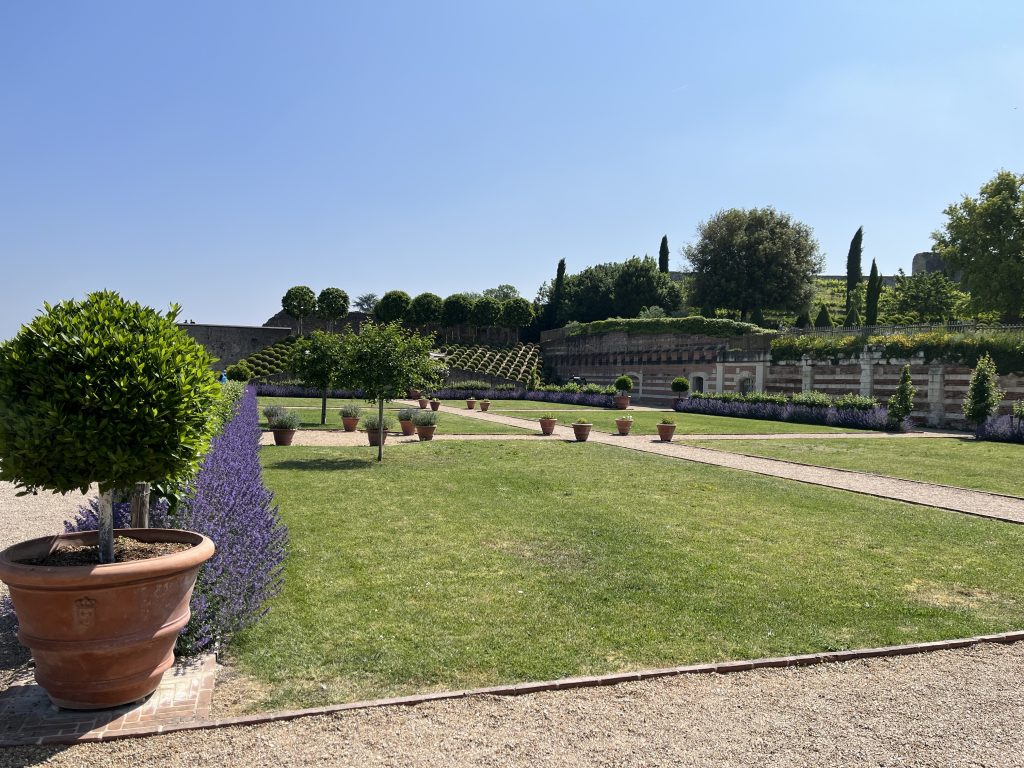
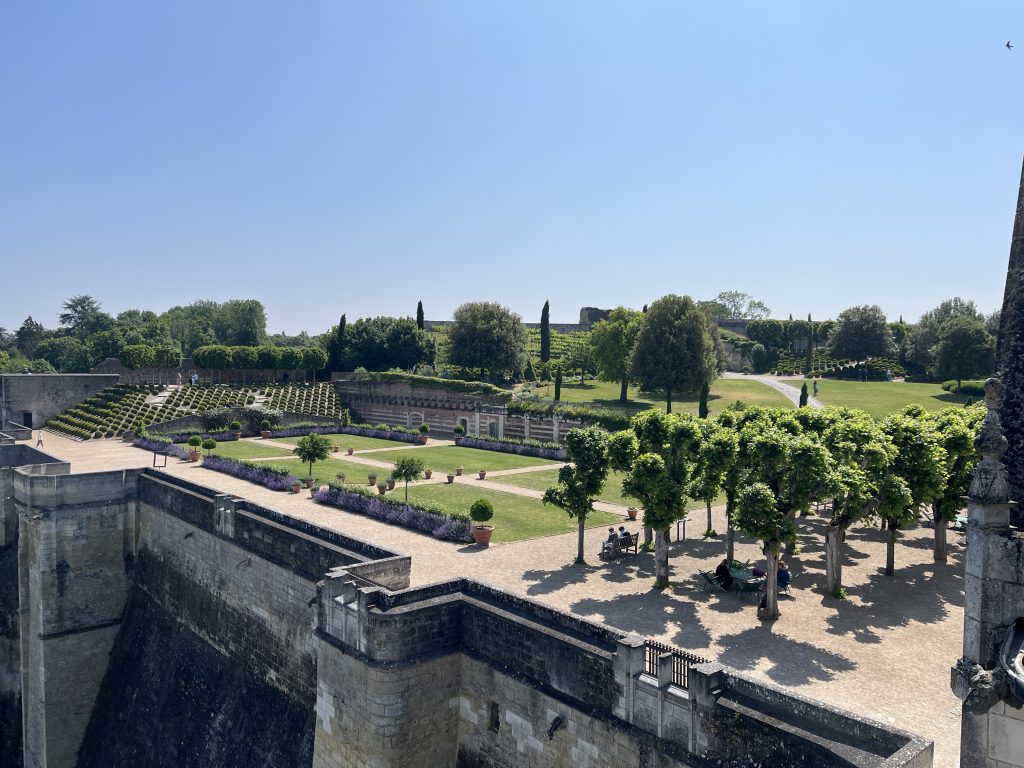
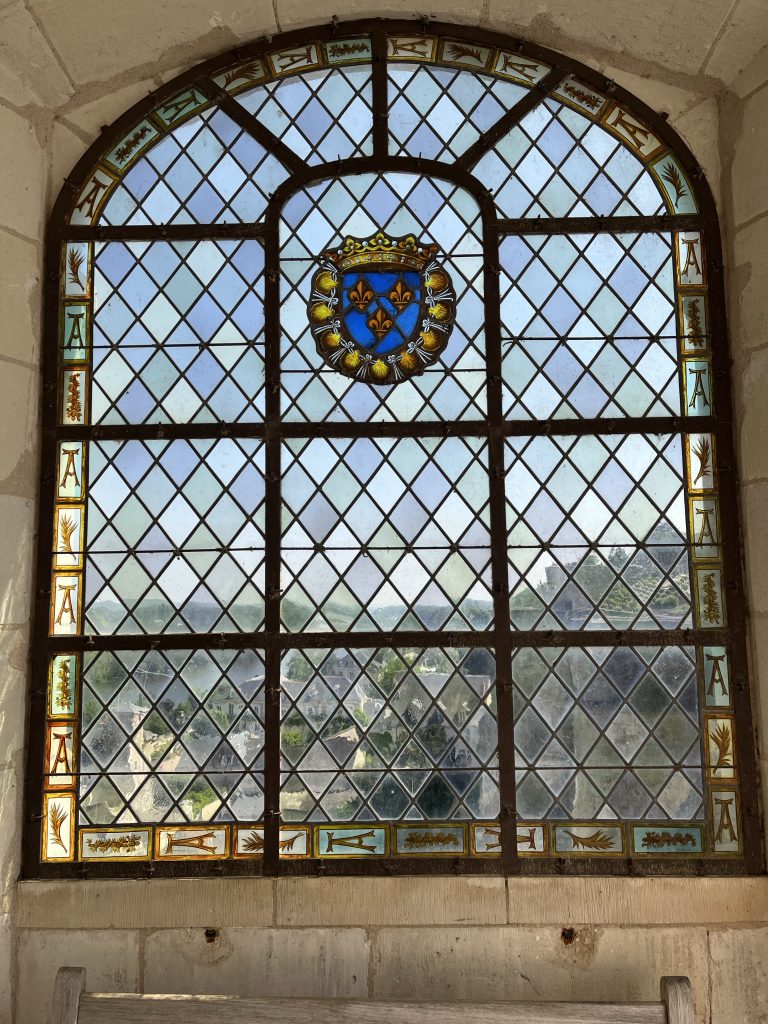
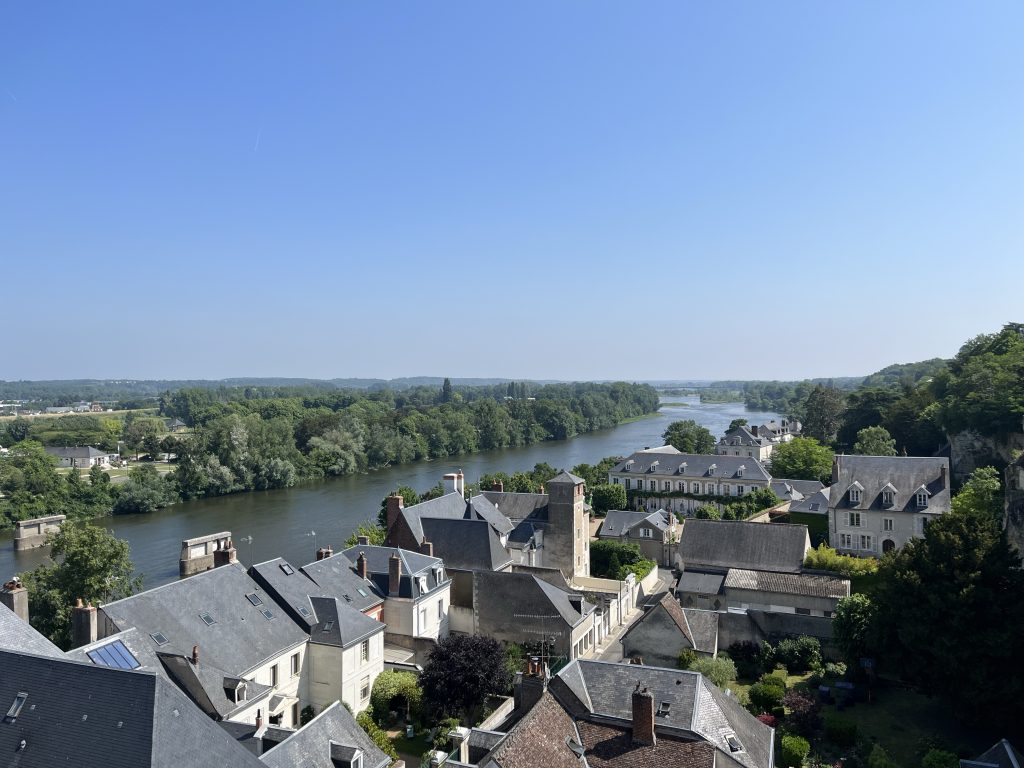
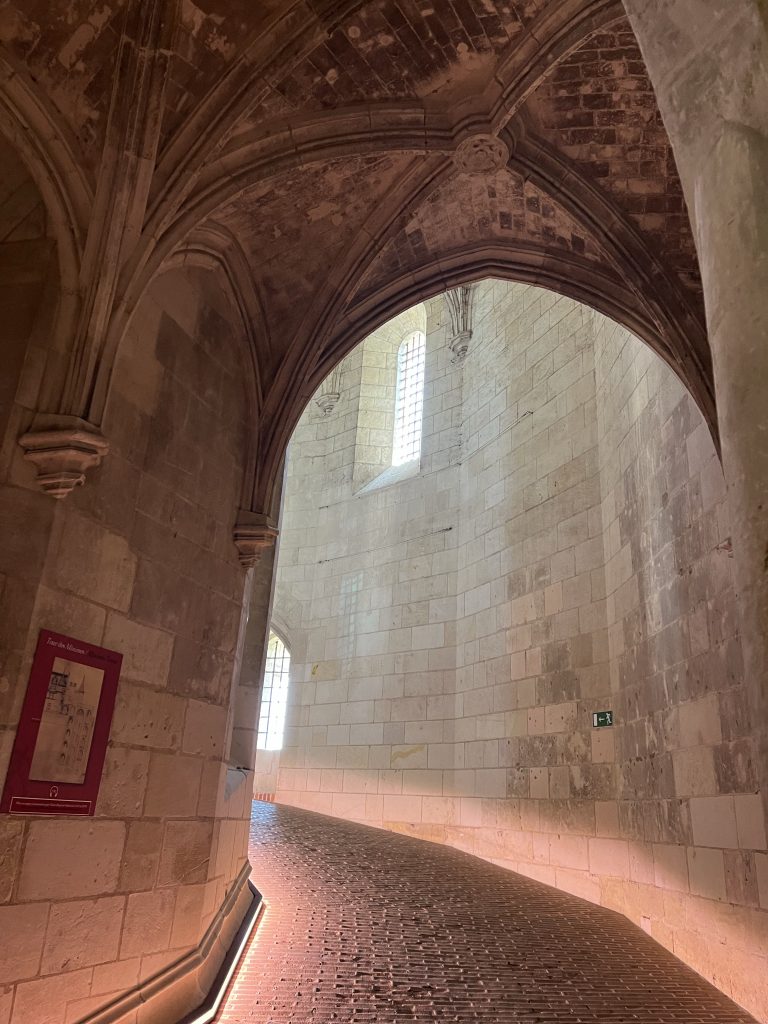
Like the steep footway to the tower.. My dad had a poster of coats of arms of the UK.. Have an urge to see it.. We used to play a game where one described the coats of arms (dagger and pick axe crossed over a helmet with a feather) the others had to guesswhich it was. We didn’t have much money for toys.. 😂